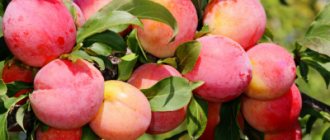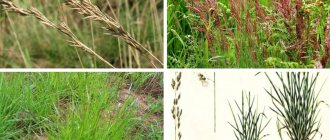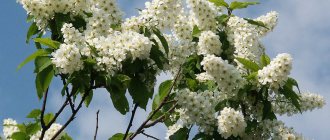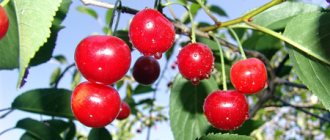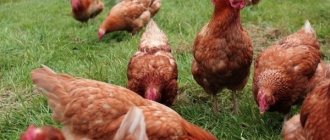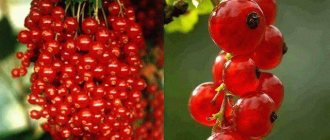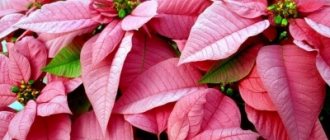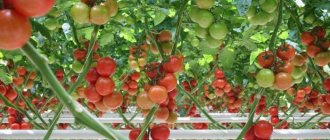Diseases and pests of justice
This flower is not a frequently diseased plant and is extremely rarely affected by pests. Often, all the diseases that affect him are the result of poor quality care:
- If Jacobinia is rarely watered, it will lose its foliage and begin to dry out.
- Due to excessive watering, the roots will begin to rot, and if they are not treated in time and transplanted into a new substrate, the flower will die.
- Too much direct sunlight is also dangerous; it burns tender leaves, causing them to dry out and fall off.
- Excessive fertilization of the flower throughout the year leads to the active growth of too large leaves, which may result in a lack of flowering.
Spider mite
Most pests do not like Jacobinia juice. Most often, spider mites are found in its roots and leaves. This happens if you grow a flower in a room with dry air. The leaves of such a flower will turn yellow and dry out. The plant will gradually begin to wither. This is due to the fact that the mite sucks the juice from its leaves and shoots. To cure, it is necessary to create the right conditions with regular air humidification and treat Jacobinia with an acaricide.
It will also be interesting: Medinilla - flower care at home
Diseases and pests of justice
The greatest dangers for law enforcement are red spider mites, whiteflies and aphids. At the same time, maintaining air humidity that is comfortable for the plant is usually a sufficient guarantee of preventing the spread of pests. But if infection cannot be avoided, it is better to immediately adjust the conditions, start washing the foliage and begin treating with insecticides.
Common problems in growing justice:
- dropping leaves when the substrate dries out or becomes waterlogged;
- yellowing of leaves due to improper, poor lighting in winter and uncorrected watering;
- leaves falling off in dry air;
- lack of flowering and development of large leaves as a result of excessive frequency of fertilizing.
Justicia brandegeeana, Jacobinia brandegeeana. © Emma Cooper
Features of caring for Jacobinia
Lighting and temperature
Calla lilies - growing and caring at home
At home, Jacobinia requires bright, diffused light. The ideal growing location would be eastern and western exposure. On the south side of the window, the flower requires shading from daytime sunlight from mid-spring to October.
Yellow Jacobinia
In late autumn and winter, it is advisable to provide the plant with at least 3 hours of directed light, so on cloudy days it is important to use a phytolamp.
The optimal air temperature for justice is 20-25 °C. From mid-autumn, you can gradually lower the temperature to winter levels within 12-16 ° C, which will allow the plant to rest and gain strength before flowering.
In summer, it is recommended to take the bush out into the fresh air or ventilate the room more often.
Watering and humidity
Caring for Jacobinia at home includes proper watering. The plant is a moisture-loving crop that requires frequent irrigation during the growing season.
However, stagnation of water in the soil causes the development of root rot, so water only after the top soil layer has dried 0.5-1 cm deep, approximately once every 3 days.
As the temperature in the room drops, watering is gradually reduced, and in winter it is watered once every 10-14 days. Tropical exotic plants react to a lack of moisture by drying out and dropping leaves and flowers.
Humidity in room conditions should be 50%. It’s easy to increase it - place the pot on a dish with wet pebbles and/or frequently spray the leaves, avoiding contact with the inflorescences.
In summer, when it’s hot, it is recommended to spray water in the morning and afternoon; in winter, you can spray it every other day. It is also advisable to regularly wipe the leaves of the plant from dust with a damp cloth.
Pay attention to the quality of water, which must be soft (settled, rain, melt) and at room temperature
Transplantation and fertilizing
The bush is replanted once every 2-3 years, but young seedlings need annual replanting for the first 2 years. The soil should be loose and breathable, so sand or vermiculite should be added to the universal flower soil in a 3:1 ratio. The pot must have holes for draining excess water and a drainage layer of expanded clay 5 cm high.
During replanting, carefully shake off as much of the old soil as possible from the root system, but so as not to damage the roots. After the procedure, the plant is watered and a shaded place is placed for 2-3 days.
In the absence of nutrients, the lower leaves of domestic Jacobinia become pale and begin to fall off, so regular feeding is important for the health of your green pet during the period of active growth for flowering ornamental crops.
Fertilizer for pelargonium or sulfinium is well suited, the minerals in which are specially balanced and easily absorbed. Feed once every 3-4 weeks, diluting fertilizers in water for irrigation.
Trimming
Since flowers form on the shoots of the current year, it is better to prune in early spring, shortening the branches by 10-12 cm. The procedure stimulates tillering and abundant flowering.
Old bushes with elongated, unattractive shoots are rejuvenated with radical pruning. All branches are shortened, leaving only one dormant bud above the ground on each shoot. As each bud actively grows, it will produce at least 2 new shoots.
Reproduction of Jacobinia at home
Jacobinia propagates well using apical cuttings, which can be taken after pruning. The cuttings are cut with a sterile instrument at an angle of 45 degrees just below the leaf node. Leaves from the lower part are removed, leaving only the upper pair.
A cut of the cutting is dipped into root growth stimulating powder, then planted in a mixture of perlite and soil (1:1). Cover with a transparent bag.
Maintain soil moisture, but do not allow water to stagnate; spray the above-ground part with warm water. Remove the bag periodically for ventilation.
Justice from a cutting
A month after new shoots appear, young plants can be transplanted into fertile soil. As they grow, pinch the tips of the shoots to enhance tillering.
Problems in growing
The culture is resistant to diseases and problems in caring for Jacobinia are associated in the vast majority of cases with improper growing conditions.
Leaves dry out and fall off when underwatered or overwatered. Leaf fall is also caused by drafts and too low temperatures.
The lack of flowering is caused by a lack of lighting. Flowers rot and fall off - the result of contact with water through splashing or due to insufficient air ventilation. Leaves become pale when there is a lack of nutrients in the soil.
Among the pests, Jacobinia is susceptible to attack by spider mites and whiteflies.
How to care for Jacobinia at home
Jacobinia small-flowered care at home photo
Caring for Jacobinia at home is quite simple; even novice gardeners can handle it.
Selecting a location
Choose a bright place for the plant. You need bright, diffused lighting, but with protection from direct sunlight during the midday hours. In winter, use artificial lighting.
Air temperature and humidity
The optimal air temperature for Jacobinia is 20-25° C. In summer, it is recommended to take it out into the fresh air or ventilate the room more often. By winter, gradually lower the temperature to 12-16° C. During flowering, it is better to place the plant in a cool place.
As a resident of the tropics, Jacobinia loves high air humidity. Spray the plant regularly, place trays with wet expanded clay and pebbles nearby, and use special air humidifiers.
Watering
Water frequently and abundantly, use softened water that has stood for at least a day. Reduce the frequency of watering as the weather gets colder; only the top layer of soil should dry out. Due to lack of moisture, leaves and flower buds will begin to dry out and fall off.
Feeding
During the period March-August, Jacobinia needs to be fertilized with complex organic compounds three times a month. In order not to harm the root system, the fertilizing should be well diluted with water. Do not overdo it; excess fertilizer contributes to the active forcing of greenery, which leads to a lack of flowering.
Trimming
The plant needs pruning every spring. There should be 2-3 internodes on each stem. Without pruning, the shoots become very elongated and become bare.
Diseases and pests
Root rot can occur from improper watering and stagnation of water. Do not make such mistakes in care. If this happens, remove the affected parts of the plant and treat the soil with a fungicide (for example, phytosporin).
Among the pests, the plant can be attacked by spider mites, scale insects, and aphids. Treatment with insecticides will help cope with them.
How to transplant Jacobinia
- Jacobinia should be replanted every 1-3 years as the rhizome grows.
- Use a stable and deep pot.
- Plan replanting at the beginning of spring and combine it with pruning of the plant.
- A flowering bush cannot be replanted.
- Place drainage at the bottom of the pot, fill it with soil containing the obligatory content of leaf soil, humus, peat, and river sand.
- Use the transfer method with maximum preservation of the earthen clod so as not to damage the fragile root system.
Caring for Jacobinia at home
Hymenocallis growing and care at home
Caring for the plant is extremely simple. Like all plants, Jacobinia needs regular watering and moisture, proper lighting and essential beneficial nutrients. Following simple rules will lead to long-term abundant flowering.
Lighting
In the summer, the flower needs to create conditions with good, but diffuse lighting. Avoid contact of direct scorching rays with leaves and flowers. In the warm season, it is best to take the flower pot to the balcony or outside, placing it in a slightly shaded place so as not to burn the leaves with direct rays.
In the cold season, Jacobinia needs direct sunlight at least 4 hours a day.
Due to weak solar activity during this period, they do not pose a danger to the flower. When grown in the shade, the shoots of Justice become elongated and thin, the leaves become small and sparse, and flowering may stop completely.
Temperature and humidity
Jacobinia tolerates small temperature fluctuations well and quickly adapts to any non-critical indicators. In summer she tolerates heat well, in winter she feels normal at temperatures not lower than +16 degrees. Some varieties, such as those with single buds, need lower temperatures in winter. For them, the optimal temperature is +6-10 degrees.
For normal flowering and growth, the owner of the flower must take care of regular air humidification. Dry air is detrimental to justice. It is necessary to regularly wipe the leaves and spray them with water. You can also place a tray with moistened pebbles next to the pot. The flower loves a warm shower, only during this procedure it is necessary to cover the soil with polyethylene.
Watering and fertilizing
In summer, Jacobinia requires frequent watering. It is produced after the top layer of the substrate has dried. Watering should be plentiful, but not excessive. Stagnant water is dangerous for the root system. In winter, watering is reduced, but the soil should also not be allowed to dry out.
It is especially important to monitor the frequency of watering if the apartment or house has central heating. It dries out both the air and the soil
During flowering, even in winter, watering becomes more frequent.
During the flowering period, once every 10 days you should feed the flower with mineral or organic fertilizers for flowering plants. They must be added to water for irrigation.
It is important not to overfeed the plant, this can lead to color loss
Preparing for winter
Jacobinia is an evergreen plant that often blooms in winter. It must be prepared for this by starting to feed it in advance with fertilizers for flowering. Watering should be slightly reduced, but increased during flowering.
It is important to adjust the lighting of the flower
In autumn, daylight hours are reduced, so it is necessary to extend it artificially. Also, to form a more compact and well-groomed bush, shoots that are too long are pruned in the fall. This will lead to the growth of side branches and make the bush more green and lush, and the flowering will be richer.
Jacobinia care at home
Jacobinia care for it is not very burdensome, but it still depends on the type of plant. And in order to get a beautiful shrub with large shiny leaves in a bright floral decoration of exotic “plumes”, or original two-color “bells”, you need to fulfill certain conditions for keeping your pet.
Selecting a location
Jacobinia flower is a plant that loves bright, diffused light; in the summer it will feel better outside, and in the winter months it even prefers direct sunlight. There is such a subtlety - get used to the sun slowly. Acceptable growing areas are windows on the western and eastern sides.
Temperature
Moderate temperatures are preferred for Jacobinia. In the summer, as already mentioned, it is better to take the plant out into the fresh air, where it will certainly adapt to the conditions of the garden or balcony, but the midday sun should be avoided. The normal summer temperature is 20-24 degrees, and the winter temperature is about 15 degrees, even up to 7 degrees is not terrible.
Humidity, watering and fertilization
Like many indoor plants, Jacobinia loves optimal conditions. But dry air is not desirable for Jacobinia. Regular spraying is required. The tray under the pot needs to be kept moist.
In the summer months, it is advisable to water Jacobinia abundantly after the upper part of the earthen clod has dried, but do not overdo it, so as not to harm your pet. Naturally, we reduce winter watering depending on the room temperature.
You can feed the plant in the active period once a month with both organic and mineral fertilizers, but without fanaticism. You cannot overfeed Jacobinia, as this may affect its flowering. The plant may not bloom at all.
Replanting and pruning
Jacobinia can be bought in the store. And, naturally, it is necessary to apply skill, desire and experience for high-quality adaptation of the plant. And transplantation also plays an important role for good growth. It is better to replant the plant in early spring. In a pot with a hole, slightly larger than the previous one, with breathable soil, carefully, the main thing is without damaging the roots, transplant the Jacobinia. The plant is not particularly picky about the composition of the soil, but it will feel comfortable in this mixture: one part each of sand, peat, humus, and three parts of leaf soil. Powerful drainage is required.
Trimming Jacobinia correctly and on time is not the last task in caring for a beautiful, branching, profusely flowering plant. We mercilessly cut the shoots in half, leaving 3-4 knots. As a result, we will get young shoots and abundant flowering.
Reproduction of Jacobinia
It is not at all difficult to propagate the Jacobinia plant or, as it is also called, the justice plant, with cuttings that have two leaves. In greenhouse conditions, cuttings planted in a mixture of perlite and peat take root within a month. Rooted sprouts, three at a time, can be transplanted into spacious 10 cm pots. During the growth process, we pinch the tops several times for better branching and the formation of a beautiful bush shape. And then, by autumn, we are waiting for beautiful flowering.
Jacobinia seeds can be bought in flower shops. We sow these seeds in the soil and wait for them to germinate in a warm room at a temperature of 25 degrees.
Jacobinia pests and diseases
We can say that with proper care, these misunderstandings do not happen. But if the plant is in a very dry room with dry air, the plant may become infected with scale insects or spider mites. Hence the Jacobinia disease, which can be identified by the following signs - yellowing of leaves, the formation of silvery cobwebs on their lower surface. If a spider mite is detected, remove leaves with affected areas, spray, and wash the plant. Treat it with chemicals.
Tips for caring for Justitia Jacobinia, Beloperone
Fittonia home care, cultivation and reproduction
Lighting and placement. Justice prefers bright, diffused light. In the northern regions, it is best to place it on a bright sunny window, south, southwest or east. In the south in the summer at midday it needs to be shaded from the scorching sun. It should be understood that it is not so much the direct sun that can cause burns on the leaves that is dangerous, but also the heat, which causes the inflorescences and leaves to dry out and fly off.
In summer, it is best to take all types of justice to the open air. You can keep it on a balcony or terrace, but with protection from cold showers and wind. Warm rain does not harm the plant.
Temperature. All types of justice are heat-loving, but do not tolerate heat well. The optimal temperature for Justice (Jacobinia) in spring and summer is 20-25°C; in winter it is better to keep it in a cool place with a temperature of 16-18°C.
Some winter-blooming species, in particular Justicia rizzinii or Jacobinia pauciflora according to the old classification, require cool conditions during the bud and flowering period. Temperatures up to 10°C are suitable for abundant flowering.
Air humidity. Justices of all types prefer high humidity, but quite successfully tolerate dry apartment air. It is useful to spray the leaves with soft, settled water.
Watering. In spring and summer, water abundantly. Water with soft, settled water, preventing the substrate from drying out. If it is too dry, the leaves and inflorescences fall off. In winter, watering is limited when kept cool. Plants overwintering in a warm, dry room are watered abundantly.
Fertilizer. During the growth period, plants are fed weekly with flower fertilizer; at other times, feeding is carried out once every 2-4 weeks.
Trimming. To obtain compact specimens, plants must be cut back by one-third or even half the height of the shoots every spring. This is necessary so that in the future the bushes will branch more strongly and acquire a lush decorative appearance. Young plants obtained from cuttings are pruned without waiting for spring.
To get a small bush, the first pinch is done at a height of 10-15 cm from the ground. The third pair of leaves is cut off from developing side shoots. With this kind of pruning, the bush turns out to be low and has many tops, on which inflorescences will then appear.
To form a tall bush or tree, pinching is done later and the lower side branches are removed.
Transfer. Justice is replanted as needed after flowering. Young plants grow quickly, so they are transferred to a larger pot 2-3 times during the summer. A good drainage layer should be placed at the bottom of the pot.
The soil. The soil for justice must be fertile. It can consist of leaf, turf soil, humus, peat and sand in equal parts with the addition of phosphorus fertilizers and charcoal.
Reproduction. Justice is easy to propagate by cuttings and seeds. Seeds germinate in soil at a temperature not lower than 20-25°C.
Cuttings are cut before inflorescences form. Root in a mixture of peat and sand at a temperature not lower than 18°C. Cuttings are taken with two internodes; it is advisable to dry them slightly and then treat them with a root formation stimulator. Plant in a pot at a slight angle and cover with a transparent plastic glass or plastic bag. The bag is removed once a day for ventilation. After about a month, you can notice growth.
You can also root in a glass of water. Transplant into pots when the roots reach 1cm in length.
Diseases and pests. Justice is quite resistant to disease and is rarely affected by pests. If kept too dry, it can be damaged by spider mites and scale insects.
- Forward >
Reproduction of Jacobinia at home
In indoor conditions, Jacobinia can be propagated by seeds and cuttings. If it is grown from seeds, then the main condition is that the crops must be in a warm place with an air temperature of about +22⁰С.
The time for cutting depends on the type of inflorescence. If they are apical, then propagation must be carried out between January and April. Cuttings will take root better if the room temperature is within +20⁰C. When their roots grow, they can be planted in individual containers up to 7 cm in diameter. If the pot is large, for example, with a diameter of 110 mm, then 3 cuttings can be planted in it at once. To increase the decorative value of the plant, it is necessary to pinch it.
If inflorescences form on side shoots, cuttings are carried out in winter - in January-February. After the cuttings take root, they must be planted in a pot with a diameter of 10 cm. In this case, it is better to plant several cuttings at once in one container.
During the rooting period of the cuttings, they need to be provided with a room temperature of at least +20⁰C, but when they are planted in separate containers, they need to be moved to a cool place with a temperature no higher than +16⁰C.
Amazing views of the ordinary indoor miracle Jacobinia
Different types of this beauty can be divided into two groups:
- Jacobinia with one or four flowers, respectively, concentrated on the side shoots;
- Jacobinia with flowers arranged in unusual inflorescences on the tops of multiple shoots.
Jacobinia pauciflora
As already mentioned, Jacobinia justitia is the same plant. Naturally, it also has another name: Justice Rizzini (Justicia rizzinii). So this low-growing subshrub with hanging and abundantly branching stems has a height of only thirty to sixty centimeters. The leaves are about seven centimeters long and 3 cm wide, leathery, ellipsoid in shape, narrowing at the top of the leaf and towards the base. The unusual thing is that the top leaves are always larger than the previous ones. And in the axils of these beautiful leaves, single flowers appear, distinguished by an interesting and original color: the base of the Jacobinia flower is scarlet, and the tip is yellow. The Jacobinia plant blooms profusely and beautifully.
Jacobinia carnea
The complete opposite of the previous species is Jacobinia meat-red or bright red. Growing up to one and a half meters in height, the subshrub has erect stems with sparse branches. Oppositely arranged, oblong-shaped, wrinkled leaves grow up to twenty-five centimeters long. It’s cool that they are dark green on top and light green underneath. Jacobinia meat-red pampers with flowering throughout the summer until autumn. This beauty is represented by a spike-shaped apical inflorescence with numerous bright red, bright pink flowers.
Jacobinia pohliana
Brazil can be fully considered the native place of distribution of Jacobinia Paul, where it happily lives in subtropical rain forests. Spreading one and a half meter high shrubs decorate the tropics with beautiful pink flowers, organized in large apical inflorescences resembling a dense spikelet. Oppositely arranged, elongated leaves with wavy edges are very beautifully clustered at the ends of the stems with the help of long petioles.
Types of Jacobinia
The genus Jacobinia has about 50 species. Up to a dozen varieties are cultivated. There is a conditional division into species with lateral and apical inflorescences.
Jacobinia Brandegeeana Justicia brandegeeana
Jacobinia Brandegeeana Justicia brandegeeana photo
It is a branched dense shrub with large apical inflorescences. The stems are covered with oval-shaped petiolate leaves. The surface of the leaf is smooth, dark green, pinkish below, covered with sparse fluff. The opposite leaves are about 7 cm long. At the end of the drooping shoot, a large spike-shaped inflorescence appears, consisting of numerous two-lipped buds. The buds are located closely, in rows, and look like one whole flower. The length of the inflorescence is 10 cm. The petals are yellow and surrounded by reddish-brown sepals. The total height of the bush with peduncle is 80-100 cm.
Jacobinia rosea or Fields of Justicia carnea
Jacobinia corporea Justicia carnea photo
The plant is cylindrical in shape, the shoots branch weakly. The height of the flowering bush is from 60 cm to 1.5 m. The leaves are opposite, oval in shape, uneven edges, pointed at the end. They are 15-20 cm long. The surface of the leaf is rough, dark green, the leaves are slightly drooping underneath and have a pink tint. At the top of the stem, erect inflorescences 10-15 cm long appear. Many buds are located close to each other, painted bright pink. The petals are narrow, slightly bent back.
Jacobinia pauciflora
Jacobinia pauciflora photo
The shrub is low-growing, reaches a height of 30-60 cm. The stems branch well, the shoots droop. The leaves are leathery, oval-shaped with pointed edges, and dark green in color. The leaf is 7 cm long and 3 cm wide. Single tubular flowers hang along the edges of the shoots, shaped like small candles. The color of the petals is bicolor: the pink-red base ends in a yellow edge. The flowering is abundant, the bush seems to be covered with many bright lights.
Jacobinia vascularis or Adatoda Justicia adhatoda
Jacobinia vascularis or Adatoda Justicia adhatoda photo
This evergreen shrub has emerald oval leaves and delicate flowers. Quite large buds are collected in a spike-shaped inflorescence. The flowers are two-lipped and white with pink or purple speckles.
Decorative varieties of Jacobinia:
- alba – large, snow-white flowers;
- Jacobinia yellow - flowers of a rich yellow color, the petals are long and narrow;
- Jacobinia variegata - leaves are covered with small white spots.
Popular types of Jacobinia grown at home
The genus Jacobinia has about 40 species. Popular varieties grown indoors are the following:
Jacobinia Pauciflora
Jacobinia pauciflora
Bush – spreading, compact, up to 0.5 meters high. The shoots are densely leafy. The leaf blades are dark green in color. The petals of single candle flowers are pinkish-red at the base and yellow at the edges. The flowers are tubular in shape.
Jacobinia Yellow (Justicia Aurea Justicia Umbrosa)
Jacobinia Yellow
Bush height - 1 meter. The shoots are straight, densely leafy. The leaves are matte, emerald green in color. Large spike-shaped inflorescences consist of golden-yellow flowers.
Jacobinia Brandegeeana (Justicia Вrandegeeana)
Jacobinia Brandege
This evergreen species is classified as medium-sized. The length of the shoots is about 1 meter. The stems are densely covered with oblong-shaped matte green leaves. The length of the leaves is approximately 7 cm. The cone-shaped inflorescences consist of small whitish flowers with red-yellow bracts.
Jacobinia Pink (Justicia Carnea)
Jacobinia rosea
The species is tall. The height of the bush reaches up to 1.5 meters. Shoots are weakly branched. The dark green leaves are quite large and drooping. Tubular flowers are collected in spike-shaped inflorescences of bright pink color.
Jacobinia Vascular or Adatoda (Justicia Adhatoda)
Jacobinia Vasculara
The shoots of Jacobinia of this species are flexible and branched. The leaf blades are glossy, bright green in color. The petals of two-lipped flowers are painted snow-white with a clearly “drawn” vascular network of a bright pink hue.
Caring for mature plants
Plant care includes the following activities:
Choosing a location. The Jacobinia flower loves sunlight. Therefore, from late May to mid-September the plant can be kept on open sunny balconies and terraces. Only on the hottest days is it better to shade the leaves from the bright sun to avoid burns. In rooms, pots are placed on south-eastern or western windows.
After autumn pruning, the pots are stored in a well-lit and fairly warm room. To prevent the shoots from thinning and stretching, use additional lighting. Otherwise, the crown loses its decorative effect.
Another danger for Jacobinia in winter is hypothermia of the earthen coma. Therefore, you need to put a sheet of foam plastic under the flower pot. Drafts and icy air are also dangerous for the plant.
When growing Jacobinia, you must strictly observe the temperature regime.
Temperature conditions. Starting from the first days of spring and throughout the summer, it is desirable that the temperature around the flower is just above 20°C. In autumn and winter, 15-17°C will be enough. Another important aspect is maintaining optimal air humidity, at least 60%. To do this, you need to constantly spray Jacobinia or use household humidifiers.
Effective watering. Proper watering is one of the most important conditions for growing Jacobinia. When the soil is overdried and in a “swamp,” the plant instantly sheds yellowed foliage. In summer, especially in hot weather, plants are watered frequently and abundantly. In dry rooms, the air around is sprayed with a spray bottle. In addition, flower pots can be placed on pallets with pebbles, moss, and expanded clay. With the onset of autumn and winter, the amount of moisture is reduced, but care is taken to ensure that the earthen ball remains moist.
Plant nutrition. Jacobinia flowers need to be fed with complex flower fertilizers. From May until the start of flowering, plants are watered with liquid solutions every 10-14 days. Before flowering, you can fertilize the bush with phosphorus. In autumn and winter, you can feed the flower 1-2 times with a weakly concentrated solution.
Trimming. Jacobinia bushes need crown formation. Without heavy pruning (long before budding or immediately after flowering), you will not get a compact, lush bush that will delight you with abundant flowering. The procedure is carried out at least once a year, shortening all shoots by 1/3 or 1/2 of the length. 2-3 internodes are left on each shoot.
Jacobinia care at home
Home care conditions
1 place . Jacobinia (justice) loves light. Slightly diffused lighting in the summer will protect the leaves from whitish sunburn spots. In winter there is no such problem. Lack of light leads to yellowing of the leaves, so additional lighting is desirable in winter. Especially on the north window. From the end of May (after the end of spring frosts) until the beginning of September, Jacobinia (justice) can be kept on an open balcony or in the garden in a place slightly shaded from the burning rays of the midday sun. There it will grow stronger and bloom longer and more colorfully.
In winter, hypothermia of the earthen clod is dangerous, so it is better to place a sheet of foam plastic under the flower pot. The desired air temperature is about 17 - 18°C. There should be no drafts; icy air is especially dangerous.
2. Watering . Proper watering is the most important condition for growing Jacobinia (justice). In dry soil and in the “swamp” it quickly sheds yellowed leaves. In autumn and winter, when daylight hours are shortened, you need to reduce watering slightly, but do not allow the soil in the pot to dry out. In a room that is too dry, air humidity is maintained by spraying, trays with wet pebbles, moss, or by using various humidifiers. But you should not abuse this. In summer, especially in the heat, the plant is watered more often and more abundantly.
3. Feeding . Jacobinia (justice) needs to be fed, but not overfed. Otherwise, it will grow rapidly, actively growing only foliage. A well-fed plant will not want to bloom. In spring and summer, I use complex fertilizers for flowering indoor plants every 10-14 days. In autumn and winter I refuse them or take them in a weak concentration so that I feed the bush no more than once a month. I increase phosphorus fertilizers before flowering.
4. Planting and transplanting . The earth mixture should be slightly acidic or neutral. I make it up from garden soil, humus, peat and sand. At the bottom of the planting container I make a drainage layer of expanded clay and charcoal. It is better to replant a fast-growing flower annually.
5. Trimming . Jacobinia (justice) needs to be formed. Without heavy pruning (long before budding or after flowering), it is difficult to get a compact, lush bush that will bloom profusely. Pruning can be done at least once a year (from late winter - early spring or autumn). I shorten all shoots by 1/3 or 1/2 the length. To rejuvenate an old plant, you have to plant it “on a stump” and wait for new shoots to appear.
In summer, Jacobinia (justice) can be kept in the fresh air.
Signs and advice from readers
It is believed that Jacobinia is able to absorb negative energy, thereby improving people's mood and helping them relax. Because of this, it is recommended to keep the flower in the bedroom and living rooms. In addition, it promotes faster healing from many diseases.
Many owners have noticed its beneficial effect on brain activity, especially intuitive activity. As a result of a long stay in the same room with a flower, people whose work is associated with active thought processes can achieve significant success.
Jacobinia, or justice, is a very popular plant. Many flower growers, having lived with it for many years, have gained experience in growing and their secrets for more beautiful flowering.
Justice is a flower that not only pleases with its appearance, but also affects the owner’s mood on a more subtle level: it helps to achieve harmony, high spirits and improved health. In addition, the tropical beauty is extremely unpretentious, which is why it is ideal for beginners in floriculture.
Diseases and pests
- This plant rarely gets sick and is almost not tormented by pests. But if you place Jacobinia in a too dry place, it may be affected by spider mites. When this happens, the plant's leaves turn yellow and then dry out, and cobwebs appear at the bottom of the leaf .
- Also, in case of lack of moisture, the justice will shed its leaves .
- If you place the flower in a too dark place for the winter, the leaves will turn yellow .
- Excess fertilizer results in excessive leaf growth and lack of flowering .
Jacobinia
Jacobinia is a plant native to southeastern Brazil, and it received its name from the name of the area where these low shrubs belonging to the Acanthus family were first discovered and described.
Blooming Jacobinia is very decorative and can decorate any room. But unfortunately for flower growers, the period of budding and flowering for this plant is short. In winter, Jacobinia loses its splendor: it does not bloom and sheds some of its foliage, retaining a few large, glossy green leaves.
In summer, with the onset of stable warm weather, Jacobinia throws out large bright pink spike-shaped inflorescences. The flowering duration of each of them is 10–12 days.
Caring for Jacobinia is not difficult, but in order for this plant to please you with lush flowering in the warm season, some skills, knowledge and time are required.
Caring for Jacobinia is identical to caring for many indoor plants, but you should know some features. In nature, Jacobinia grows in tropical rainforests, where there is a lot of warmth and diffused sunlight. Therefore, Jacobinia needs to be provided with similar conditions: for this plant you need to choose a well-lit, warm room in which the temperature will not drop below 20 degrees. But you need to remember that Jacobinia needs diffused light, and direct sunlight can harm the plant.
Jacobinia is very sensitive to cold. Even short-term cooling of the root system of a plant to 15 degrees can lead to its death. Water for irrigation should be boiled, slightly heated to 25-30 degrees. It should be remembered that Jacobinia requires moderate but constant humidity; the soil in the pot should not be allowed to dry out. If Jacobinia shows the first signs of wilting, then you need to water the plant abundantly. In winter, during the heating season, Jacobinia should be sprayed with warm water from a spray bottle.
Jacobinia grows very quickly; in a short time it can turn into a large shrub. Such a grown plant needs to be transplanted into a freer container, which should be filled with fertile substrate. The following soil is suitable for Jacobinia: 2 parts of fertile soil, 1 part each of peat and coarse river sand. Drainage should be poured into the bottom of the pot, and a little dried horse manure should be added under the soil.
During the active growing season, the plant needs feeding: you can use special fertilizers for indoor flowers, or mullein. Fertilizing must be applied to the soil 2 times a month, after abundant watering.
In nature, Jacobinia's neighbors are low shrubs and dense grass, and in order to receive the required amount of sunlight, young specimens very quickly stretch upward. After the trunk reaches 1 - 1.5 meters, side shoots begin to appear on the plant.
In order for Jacobinia, growing indoors, to turn into a lush, low bush, the crown must be shaped. To do this, branches that have reached the desired height are pinched. If necessary, resort to pruning.
| Next > |
Caring for a shrimp flower at home: 5 important rules
Justice is an unpretentious flower. However, improper care can deprive it of flowering and you of watching the flower-spike bloom. And this is truly a magical sight!
For Jacobinia, the correct watering regime is very important.
To prevent this from happening, you need to remember the following points. This:
- Temperature. Justitia is a tropical beauty, therefore temperature and humidity conditions are important for it. The optimal option is 23-25ºС, although it tolerates the summer heat of 28-30ºС well. In winter, the temperature cannot be lowered below +16ºС, otherwise the plant will begin to shed its leaves and lose its decorative appearance.
- Humidity and watering. The earthen ball should never dry out, but there is no need to flood the flower either. In summer - spraying 2 times a day, in winter - several times a week, if there are heating devices nearby.
- Soil and fertilizing. A good option is universal soil from the store or a loose, nutritious earthen mixture created with your own hands. Fertilizer - iron chelate, complex organic and mineral fertilizers.
- Lighting. In summer - maximum light using indirect rays, in winter - minimum, up to 4-6 hours a day.
- Love for an unusual flower and the desire to grow a real miracle!
Attention!
Jacobinia needs pruning every year. The best period is late February-early March. Each shoot should be shortened by 1/2 the length for compactness, neat appearance and long flowering! That's all the secrets! And the intricate Jacobin justice from foreign countries becomes ours, ours!
Interesting information about the beautiful Jacobinia
Jacobinia (Jacobinia) - a magnificent tropical plant has its first name, corresponding to the name of a small place in the south-eastern part of Brazil in the state of Bahia, where it is widespread and was discovered. Another name for Jacobinia is Justice (Justicia) in gratitude to the gardener and florist from Scotland James Justice.
The genus Jacobinia is considered the property of the Acanthaceae family, which supposedly contains 50 species of shrubs and herbaceous plants. According to the new taxonomy of plants in this period, Jacobinia is assigned to the genus Justitia.
The Jacobinia genus is rich in evergreen perennial shrubs, often growing up to one and a half meters in height, and herbaceous plants. Plants are brown-red in color and have straight, semi-lignified stems, swollen at the nodes. The green or variegated leaves of Jacobinia are oppositely located, lanceolate, ovoid, one might say elliptical in shape, the edges of which are pointed. Yellowish, red, orange or white tubular flowers in the singular, or gathered into original, spikelet-like, decorative inflorescences. They can be seen thanks to the multi-colored elongated bracts on which they are located. It is precisely these bright yellow bracts that make Jacobinia similar to its close relatives from the Acanthaceae family, such as Aphelandra, Pachinachis, Beloperone and Sanchesisia.
Types in indoor culture
Of the 40 representatives of the genus, only a few have become widespread in indoor floriculture. The types of Jacobinia listed below are not capricious in home care, as they adapt well to indoor growing conditions.
Jacobinia pink (Jacobinia Carnea), which due to its large, pink, apical inflorescences is called the “royal crown”. The height of the species is from 60 cm to 1.5 m. The leaves are shiny, dark green, 15-20 cm long.
Jacobinia Carnea
Jacobinia pauciflora, also known as Justice floribunda. A very decorative dwarf shrub with numerous drooping, narrow, tubular flowers in shades of red-orange and yellow.
Jacobinia pauciflora "Anita"
Justicia brandegeeana, synonym - Beloperone guttata (Beloperone). A shrub with branched, densely leafy shoots and drooping apical spike-shaped inflorescences of white tubular flowers surrounded by adjacent pink-bronze bracts.
Beloperone guttata (Beloperone)
Yellow Jacobinia (Justicia aurea) is native to Mexico and Central America. Straight, tubular, bright yellow flowers bloom on the tips of shoots in summer.
Botanical characteristics of Jacobinia
This species includes more than 50 varieties of shrubs and subshrubs. At home, most often only 2 types of plants are grown: Bright red or Meat red and Pink Jacobinia Fields. Also, many of its species can be successfully grown in open ground.
Jacobinia is an evergreen perennial semi-lignified shrub or subshrub up to one and a half meters in height. On smooth, dense, erect, red-brown stems, paired ovate or lanceolate leaves grow opposite.
Some varieties have petiolate leaves. They are painted dark green; varieties with variegated leaves are less common, and the bumpy surface of the plate is streaked with veins. The edges of the leaf blade are jagged and pointed at the end. The plant is covered with a large amount of foliage even during the dormant period and after flowering, which makes it even more popular among gardeners.
Jacobinia has a fairly developed, highly branched root system. Thanks to the small thin shoots, the flower manages to absorb more beneficial microelements and essential substances from the soil.
Jacobinia can please its owner with bright and lush flowering, as in the photo, subject to simple rules of care and propagation at home.
Sometimes Jacobinia blooms twice a year: at the end of winter and at the beginning of autumn. Flowering most often occurs in February-March. The flowers are tubular, multi-tiered. Bracts can be of a wide variety of colors: orange, coral, white, pink, scarlet and other color options.
Collecting in large spike-shaped drooping inflorescences, the flower looks very impressive. A blossoming bud may not fade within 2 weeks. Most often, the plant can be purchased at various fairs and nurseries. For unknown reasons, it can be found extremely rarely in flower shops.
It will also be interesting: Strelitzia (bird of paradise) - caring for a royal flower at home
Characteristics of Jacobinia
The height of Jacobinia can reach up to 1.5 meters. At home, the plant grows to a maximum of 1 meter. The stems grow upward, they are very flexible, heavily leafy. Over time, the stem becomes slightly woody. The leaves have an elliptical shape. They are colored green, sometimes there may be specks and droplets on the surface of the leaf plates.
We recommend similar posts:
Gloxinia - growing from seeds, care at home
Sunflower - planting and care in open ground
Jacobinia's inflorescences are large, multi-tiered, and candle-shaped. The flowers are drooping, long, tubular. They are mostly white, pink, red or orange in color.
There are two types of inflorescences, as a result of which the species are divided into two groups. The first group includes varieties in which flowers form on the side shoots; to the second - at the tops.
In indoor conditions, Jacobinia blooms from February to April. If favorable conditions are created for the plant, Jacobinia may begin to bloom again in the fall.
The most common types
Justicia brandegeeana was formerly known as Beloperone Guttata. Its homeland is Mexico, in nature it is an evergreen small, highly branched subshrub up to 1 m high, with elliptical, petiolate leaves about 10 cm long, pointed at the ends. Beloperone has been grown at home for a long time; this plant is valued for its ability to bloom all year round. The flowers appear all year round at the ends of the shoots and have bright pink and reddish-yellow bracts. The flowers themselves are white, with dark burgundy speckles at the throat. There are several varieties that differ in the color of the bracts - some are bright yellow, others are pink or brick-colored. The flowering is long, and it is also noteworthy that after flowering the bracts retain their bright color for a long time, which makes this type of justice attractive almost all year round.
Justicia carnea was formerly known as Jacobinia carnea or Jacobinia pohliana. She is originally from Brazil. Under natural conditions it is a shrub up to 1.2-1.5 cm high; at home it grows up to 80 cm.
The leaves are quite large, wrinkled, ovoid, dark green, sometimes with a bronze tint, about 15-20 cm long. This type of justice, unlike beloperone, has green bracts, and the flowers themselves are bright. They form a head with many long and narrow petals of bright pink color.
Justicia rizzinii was known as Jacobinia pauciflora. Her homeland is Brazil. A very convenient plant for growing at home, this justice is only about 30-50 cm in height. The shoots branch well, the leaves are dark green, small, only about 2-4 cm in length. The flowers are tubular, drooping, about 2 cm long, red-yellow, collected 3-5 pieces in racemes. Valued for flowering in cool winter months. Blooms profusely in late winter - spring.
Justice betonica (Justicia betonica) is native to India and also grows in Southeast Africa. In nature, it is a tall shrub up to 2 m in height; in indoor conditions it will grow up to 1 m. The leaves are slightly wavy. The bracts of this justice are creamy-light green with green veins, and the flowers themselves are light purple. The inflorescences are erect and bloom profusely.
Caring for justice at home
Even inexperienced flower growers cannot call justice capricious plants. They require regular care and do not tolerate complete drying of the substrate and low air humidity. But apart from attentive care, they won’t cause any special trouble. Jacobinias, in which tubular flowers bloom throughout the shoot, are more capricious for wintering; the classic and most common justices will pleasantly surprise you with their “flexibility.”
Lighting for Justice
One of the main advantages of Justice is rightly considered to be the ability to bloom almost all year round, even in partial shade. This plant does not like direct sunlight, but prefers light or at least slightly shaded locations. Due to the fact that justice can be grown in partial shade, it is actively used in interior design, but only in the summer: in the cold season, these beauties must be displayed in well-lit places. It tolerates artificial illumination very well, which fully compensates for the poorer light conditions. And at the same time, keeping it in artificial light does not affect the abundance of flowering of the plant.
When growing Jacobinia outdoors in the warm season, it is better to provide them with a semi-shaded location and reliably protect the plant from the midday rays of the sun.
Comfortable temperature conditions
Justice authorities are not demanding at all regarding temperatures. All modern, most often hybridized plants do well indoors. During the spring and summer, Jacobinia will prefer temperatures between 20 and 25 degrees Celsius. Winter mode is usually limited to the usual 16-20 degrees. Although when purchasing, it is better to clarify what kind of wintering the justice is accustomed to, as a rule, this plant will feel comfortable in the same place as you. Winter temperatures allow temperatures to drop as low as 16 degrees, but such conditions are preferred by corporal justice rather than Jacobinia Brundege. Two species that produce flowers not only on the tops, but also on the side shoots - Jacobinia Giesbrecht and Justice floribunda - in winter need to be placed in cool conditions of 10 to 12 degrees Celsius to stimulate the formation of flower buds. When wintering in a warm place, these justices may not bloom at all. But such Jacobins can be placed on balconies and terraces in the summer.
Justicia carnea or flesh-red, Jacobinia carnea. © Shihmei Barger
Watering and air humidity
Maintaining a humidity that is comfortable for justice is the main and most difficult component of plant care. Justice needs constant substrate moisture and medium-frequent watering. Between procedures, only the upper part of the substrate should dry out, about 2-3 cm. Stagnation of water in the soil should be avoided by draining it immediately after watering from the trays and always checking that the top of the soil has dried out before the next watering. A drought is unacceptable for justice.
The winter regime for maintaining justice systems should not change radically, but it should change. If you maintain constant intense substrate moisture, the plant will shed its leaves. Therefore, from October to November, justice is kept in a substrate with light moisture, in which the middle layer partially dries out. The earthen clod should not be allowed to dry out completely, because it will lead to the same result as waterlogging. Watering is reduced more significantly for plants that overwinter in cool temperatures, and less for those plants that remain at their usual room temperatures.
Justicia rizzinii. © andrea signorini
It is even more humid to maintain high air humidity. Justice will quickly lose its attractive lushness, colors of both leaves and bracts if it grows in too dry a climate. For justice, the minimum acceptable air humidity levels are 60-65%; bushes look best at 75-85% humidity. To ensure comfortable conditions, it is better to use a combined approach:
- place the plant on trays with damp moss or pebbles;
- carry out frequent spraying.
Both for spraying leaves and for watering Jacobins, you can use only long-term settling water, soft and warm.
Feeding for justice
Justice plants do not need super-intensive fertilizing, but from March to September, fertilizers must be applied regularly. The optimal strategy for Jacobinia is to fertilize every 10 days with universal fertilizers or mixtures for flowering crops. The fertilizing strategy needs to be adjusted by observing the plant: if larger leaves begin to grow, then fertilizing can be made more infrequent to prevent the growth of greenery to the detriment of flowering. And vice versa: shrinking foliage can serve as a signal that Jacobinia needs more frequent feeding during the period of active growth.
From October to February, justice can not be fertilized at all or the plant can be given a standard dose divided into 2-3 times with a frequency of 3-4 weeks between fertilizing.
Justice Trimming
Justice needs the annual formation of bushes. Since they bloom only on the shoots of the current year, without pruning the plants simply will not be decorated with luxurious “intoxicating” inflorescences. It is better to prune in early spring, just before replanting. All branches on the bushes need to be cut to approximately half the length, leaving 2-3 internodes on them.
Justice Brandege. © Ali Eminov
If old Jacobinias bloom poorly, begin to degenerate, and lose the attractiveness of the crown, they need to be rejuvenated instead of the usual pruning. The above-ground parts are cut as low as possible, leaving only stumps, and after radical cutting, the plant is transplanted into a smaller pot.
Transplantation and substrate
It is better to replant this crop annually, regardless of the age of the justice itself. Transplantation is carried out in the traditional time frame, in the spring (in March, no later than the first ten days of April). The only exception is Justice floribunda, which is replanted immediately after flowering, in winter. When replanting, you need to act carefully, trying to cause minimal damage to the root system of the plant. For all justices, except those that have undergone rejuvenation, the container must be replaced with a larger one.
Also select the soil for justice carefully. This beauty prefers high-quality or universal substrates with a pH of 5.5 to 6.5 maximum. Some Jacobinia grow better in acidic soil, but it is better to clarify this parameter when purchasing. A mandatory requirement for the soil mixture is a high humus content. The optimal substrate is considered to be one consisting of equal parts of humus, turf soil, sand and peat.
Justice Brandege. © Bill Bischoff
